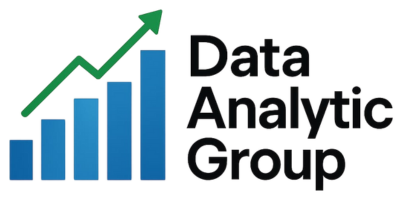In the evolving landscape of data management, Data Lakes have emerged as a powerful solution for storing and processing vast amounts of data. However, effectively managing a Data Lake requires a strategic approach. This blog explores best practices for Data Lakes, as well as the challenges they present.
A data lake will be used as a central repository to examine data architecture in this section. Although we concentrate on the fundamental elements, including the layers for intake, storage, processing, and consumption, it’s crucial to remember that there are a number of architectural options available for contemporary data stacks. Numerous design options are available for both computation and storage resources, which can be located on-site, in the cloud, or in a hybrid configuration. You may customize an architecture to best meet the needs of your company by being aware of these important levels and how they work together.

Best Practices for Data Lakes
- Define Clear Use Cases
Before setting up a Data Lake, it is vital to define specific use cases. Understanding how the data will be utilized helps improve architecture and design, making the Data Lake more effective. - Implement Robust Governance Policies
Establishing data governance protocols is essential to ensure data quality, security, and compliance. This includes defining roles and responsibilities for data management and ensuring adherence to regulations. - Optimize Data Ingestion Processes
Create efficient data ingestion pipelines that allow for the seamless integration of data from varied sources. Consider using tools like Apache Kafka or AWS Glue to streamline this process. - Utilize Metadata Management
Employ effective metadata management strategies to improve data discoverability and usability. A well-organized metadata catalog helps users quickly find and understand the data available in the Lake. - Ensure Scalability
Design the architecture to be scalable, accommodating the growing volume of data over time. Cloud-based solutions offer the flexibility required for scalability. - Leverage Data Processing Frameworks
Utilize modern data processing frameworks such as Apache Spark or Flink to perform efficient data processing and analytics in your Data Lake. - Prioritize Data Security
Implement strong security measures, including encryption of data at rest and in transit, to protect sensitive information stored in the Data Lake.
Challenges of Data Lakes
Despite their pros, many of the promises of data lakes have not been realized due to the lack of some critical features:
- no support for transactions,
- no enforcement of data quality or governance,
- poor performance optimizations. As a result, most of the data lakes in the enterprise have become data swamps.
- Lack of a schema or descriptive metadata
- Lack of semantic consistency across the data
- It can be hard to guarantee the quality of the data
- Governance, access control and privacy issues can be problems
- Integration of relational data
- Integrated or holistic views across the organization
- Dumping ground for data that is never actually analyzed or mined for insights
- Data Quality Issues
Ensuring the quality of the data ingested into the Data Lake can be challenging. Poor data quality can lead to inaccurate analytics and insights. - Complexity in Data Management
As Data Lakes grow, managing the data becomes increasingly complex. Keeping track of varied data formats and structures can pose significant challenges. - Regulatory Compliance
Navigating compliance with data protection regulations (like GDPR and CCPA) can be daunting, especially considering the vast amounts of data stored in a Data Lake. - Integration Difficulties
Integrating data from disparate sources can lead to difficulties, especially when dealing with varying data formats and standards. This can slow down the ingestion and processing workflows. - Performance Concerns
As more data accumulates, performance issues may arise. Ensuring efficient query performance and response times is critical for user satisfaction. - Skill Gaps
There may be a lack of expertise in managing Data Lakes within an organization. Continuous training and hiring specialists can mitigate this issue.
Industry Use Cases:




Versus comparison? For Your Reference

Conclusion
Data Lakes offer tremendous potential for organizations looking to harness their data for insights and decision-making. By following best practices and being aware of the challenges, organizations can maximize the benefits of their Data Lakes and stay ahead in the data-driven landscape.
Thank you for reading our blog! We’d love to hear your thoughts and feedback, so please share your comments below and let us know what you enjoyed or what topics you’d like us to cover in the future. Your insights are valuable to us and help shape our content!
